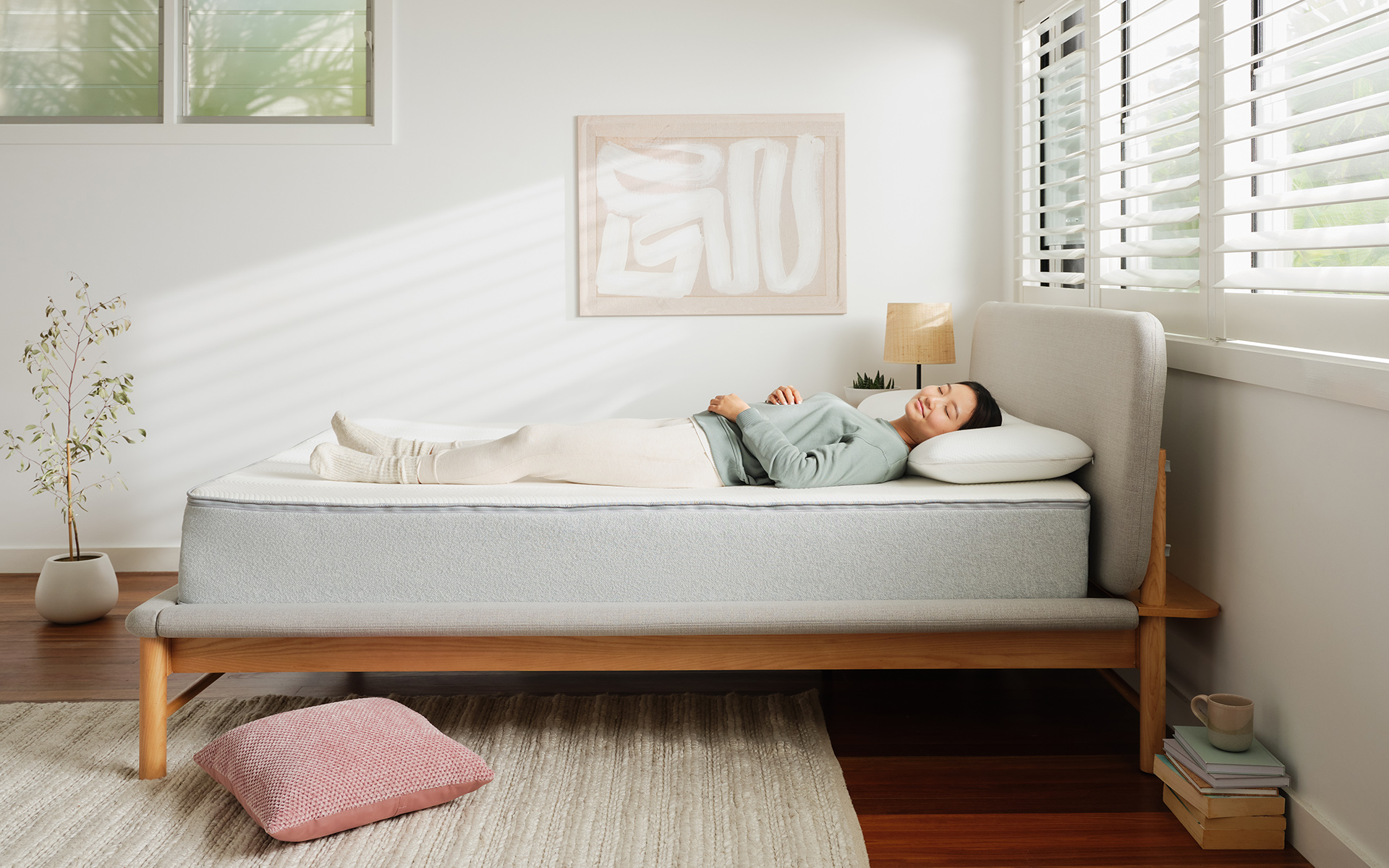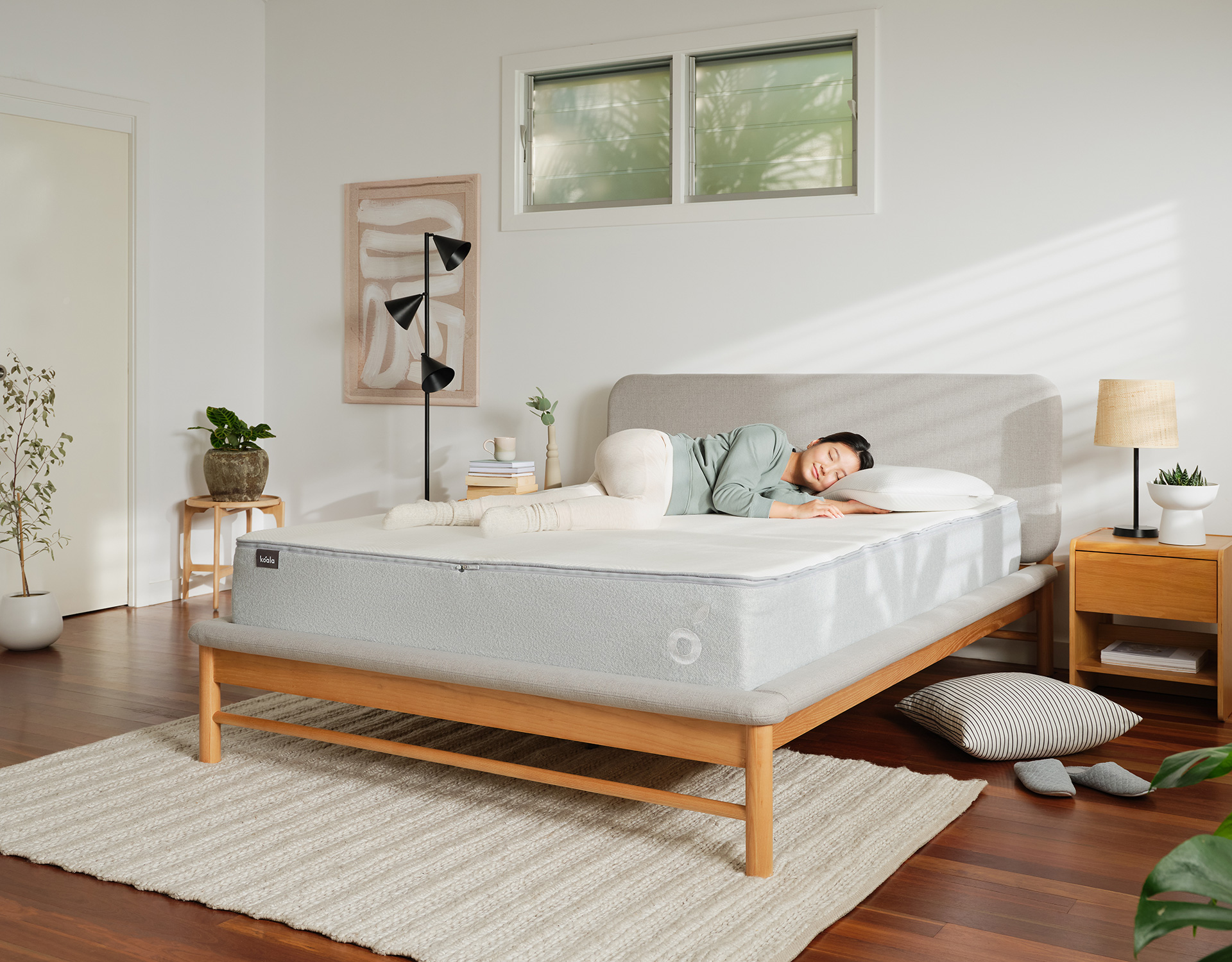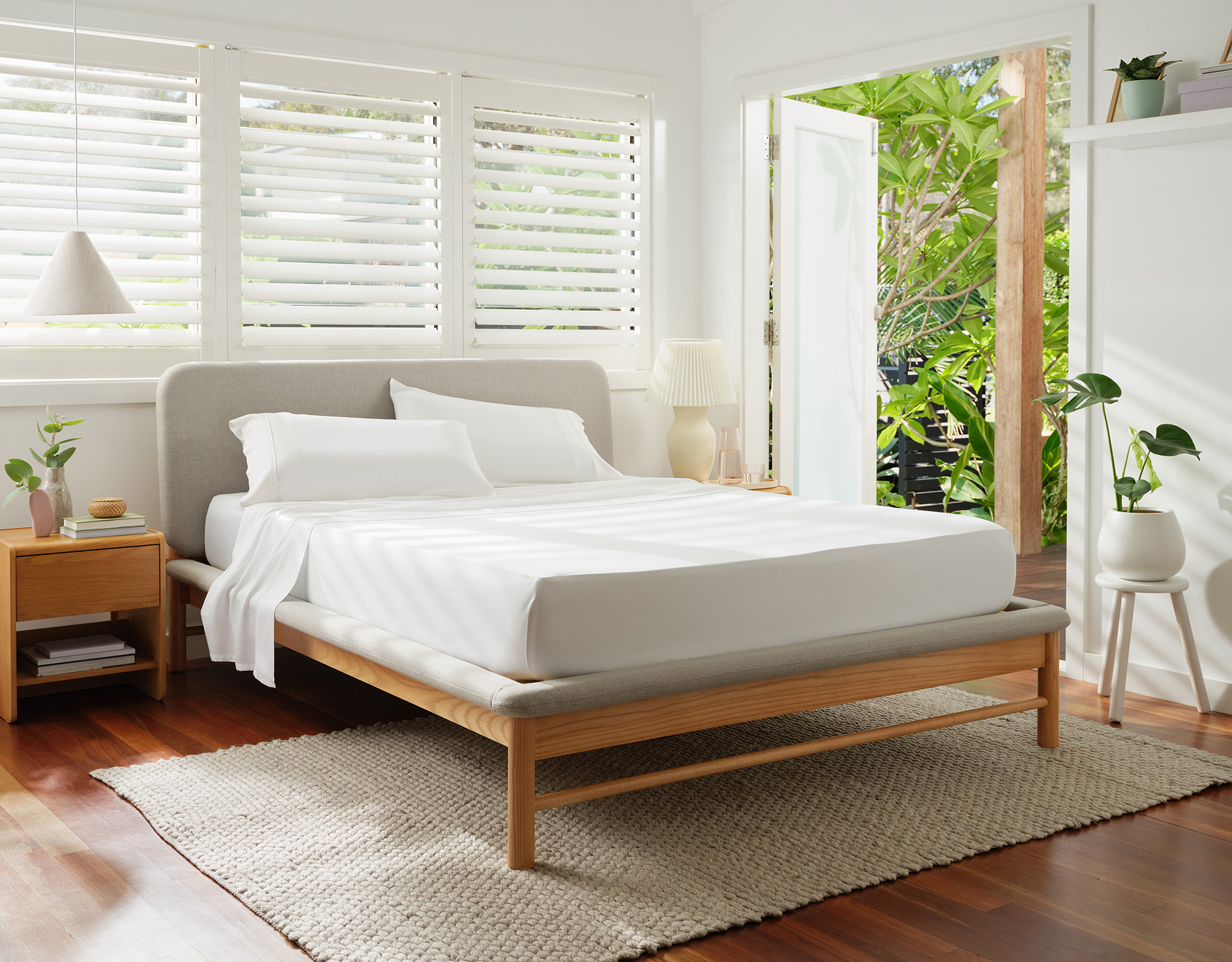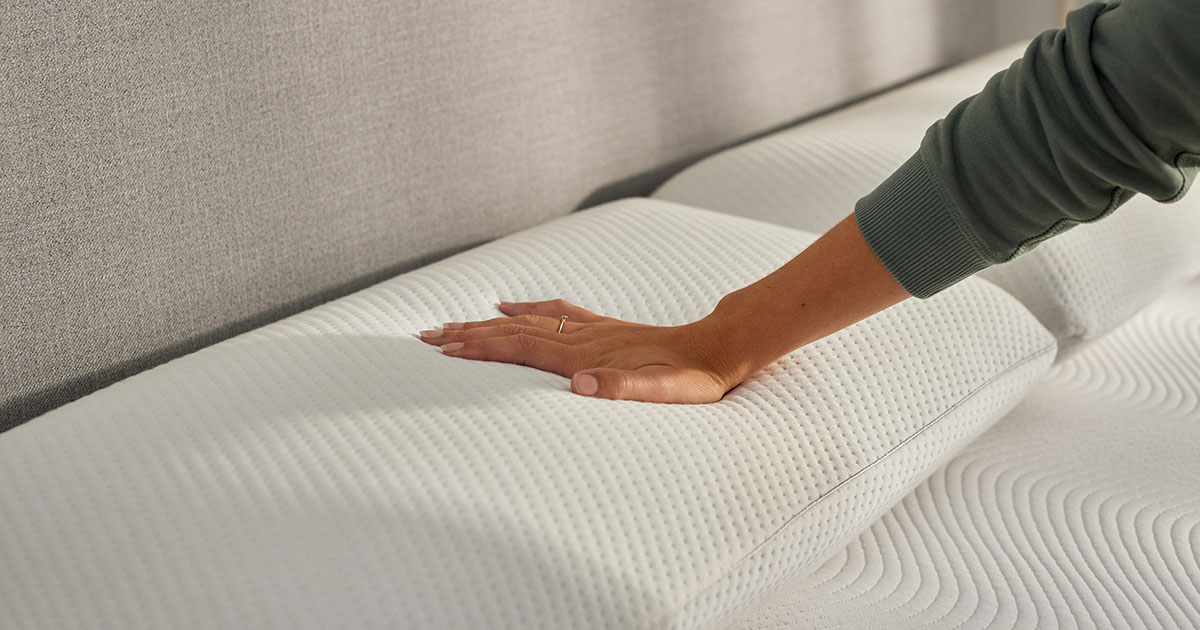We spend a third of our lives sleeping — yeesh. On the mornings that we find ourselves curled up like a pretzel, chances are our sleep was less than ideal. So if you want better sleep in a position that will actively aid rest, let’s revisit the three classic sleep positions and uncover the best position to sleep in for deep and unencumbered rest.
Is there an ideal position to sleep in?
Back, side, stomach or reclining — what’s your favourite position?
We all have our own takes on these different sleeping positions and absolutely swear by the ones that work for us. But still, is there such a thing as the best sleeping position for a solid night’s sleep?
We spoke with sleep and clinical psychologist Andrew Mair to get all the sleep-related goss.
“Comfort is key, regardless of your chosen sleeping position,” says Andrew. “If you’re getting good sleep and waking without aches and pains, by all means, stick with your current sleeping position.”
Okay, but surely there’s a position that kicks the others to the curb? Let’s take a look at the pros and cons of all of the sleeping positions and what they could mean for you.
The best sleeping positions
The best sleeping position is the one that supports your head, neck and hips while keeping your spine aligned. This might look different for everyone, but most of the time, people usually sleep on their fronts, backs or sides.
Side sleepers
Side sleeping is the number one position for more than 60% of people. If you suffer from a sore back, sleeping on your side will most likely be your best option. It’ll give you adequate support from head to toe, as long as you’ve got the right mattress and pillows to boot.
Which side should you sleep on?
Experts will typically suggest sleeping on your left, especially if you’re pregnant or suffer from acid reflux. You might also find that sleeping on your left helps with heartburn.
Can’t sleep on your left side? There might be a valid reason for this. Perhaps you have hip or shoulder pain on that side, or interestingly, if you’ve experienced heart failure, you might find sleeping on your left side a bit uncomfortable. Give sleeping on your right side a go to relieve some of this discomfort.
Back sleepers
A supine sleeping position, otherwise known as sleeping on your back, is great for keeping your spine aligned and supporting your neck.
It’s also a great option if you’ve got a cold. Grab your nasal spray, prop yourself up in a reclining sleeping position — sleeping with an extra pillow can help elevate you up better — and breathe easy.
Front sleepers
With most people spending less than 10% of the night sleeping on their fronts, this is the least popular position. It’s not the best for keeping your spine in alignment, and turning your head to one side can strain your neck. But if it works for you, keep doing what feels good. Get the right mattress and you’ll have all the support you need.
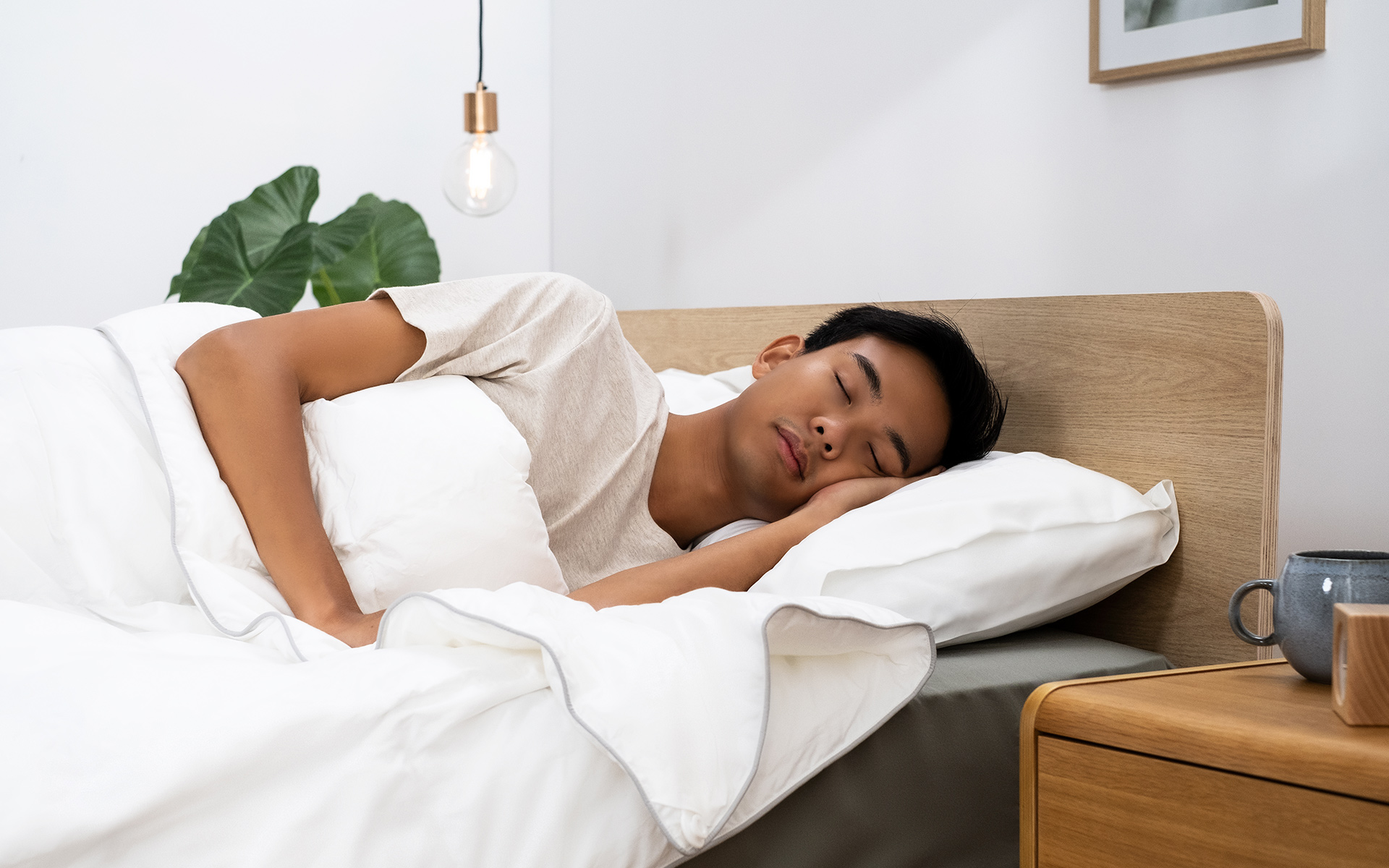
Which direction should you sleep in?
The direction of sleep is an interesting one. According to some ancient traditions, in the northern hemisphere you should sleep with your head pointing south and your feet pointing north. The belief is that lying the ‘wrong’ way round could lead to headaches and high blood pressure.
How does it work? Well, the theory is that your head acts as your north pole, and because opposite poles attract, by lying with your head towards the south and your feet towards the north, you line up your body’s magnetic energy with that of the earth’s.
Which direction should you sleep in Australia? According to vastu shastra and feng shui, you should avoid sleeping with your head pointed south in the southern hemisphere, so get that head pointing north, east or west. It’s all about aligning your inner compass with the earth’s magnetic field. Achieving the right feng shui in a room can take time and practice, so have a go, and create a room that brings you peace of mind.
Ailments, injuries, illnesses and sleeping positions
Trying to sleep when you’re sick or injured can be a real nightmare.
“When you sleep on your back, it can restrict your airways, making it harder to breathe,” says Andrew, “which may lead to you waking more often throughout the night.”
And the same is true of snoring. “If you’re prone to sleeping on your back, you may find that it worsens your snoring due to the restriction on your airways.”
While there isn’t such a thing as the healthiest sleeping position, Andrew says your environment can play a role in determining how you sleep.
“For people with certain physical conditions, they may have to sleep in a hospital-style bed, and they may find a reclining sleeping position most comfortable. Essentially, it comes down to the individual and any health issues they might be facing.”
For some great tips on how to rest and recover following an illness or injury, check out this article. Or shop online today to see if we have anything in our range that suits your fancy.
Koala likes all positions
Whether you’re a front, side, back or reclining sleeper, we want to make sure you’re getting up close and personal with the best mattress and pillows. Lucky for you, we know a thing or two about such things. The Koala range of award-winning and highly rated mattresses and pillows are designed for all types of sleepers and sleeping positions.
And we’re happy to say that a Koala mattress is guaranteed to give you a better night’s sleep.
And when it comes to buying a mattress online, it couldn’t be easier. With fuss-free home delivery and a risk-free 120-night trial, we reckon you’ll be a Koala convert in no time.
